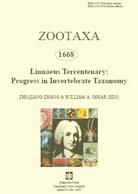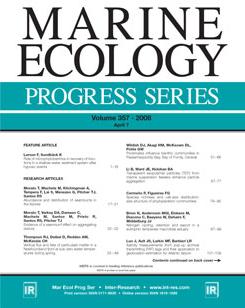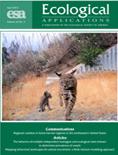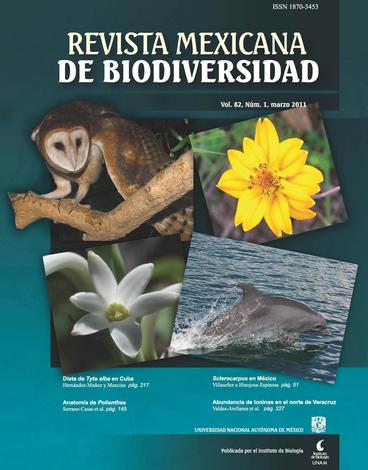|
Alumni Publications
 Abraham, R. K., Pyron, R.A., Ansil, B.R., Zachariah, A., & Zachariah, A. (2013) Two novel genera and one new species of treefrog (Anura: Rhacophoridae) highlight cryptic diversity in the Western Ghats of India. Zootaxa 3640(2): 177-189. Abraham, R. K., Pyron, R.A., Ansil, B.R., Zachariah, A., & Zachariah, A. (2013) Two novel genera and one new species of treefrog (Anura: Rhacophoridae) highlight cryptic diversity in the Western Ghats of India. Zootaxa 3640(2): 177-189.
Amphibian diversity in the Western Ghats-Sri Lanka biodiversity hotspot is extremely high, especially for such a geo-graphically restricted area. Frogs in particular dominate these assemblages, and the family Rhacophoridae is chief among these, with hundreds of endemic species. These taxa continue to be described at a rapid pace, and several groups have recently been found to represent unique evolutionary clades at the genus level. Here, we report DNA sequences, larval and breeding data for two species of rhacophorid treefrog (Polypedates bijui and a new, hitherto undescribed species)...
 Acevedo, A.A., Wake, D.B., Marquez, R., Silva, K., Franco, R., Amezquita, A. (2013) Two New Species of Salamanders, Genus Bolitoglossa (Amphibia: Plethodontidae), from the Eastern Colombian Andes. Zootaxa 3609(1): 69-84. Acevedo, A.A., Wake, D.B., Marquez, R., Silva, K., Franco, R., Amezquita, A. (2013) Two New Species of Salamanders, Genus Bolitoglossa (Amphibia: Plethodontidae), from the Eastern Colombian Andes. Zootaxa 3609(1): 69-84.
The salamander fauna of Colombia is very poorly known, probably because most research efforts have been devoted to anurans during the last two decades. Here, we describe two new species of the genus Bolitoglossa (Eladinea) from the eastern flank of the Eastern Colombian Andes (Cordillera Oriental), near the border with Venezuela. Bolitoglossa tamaense sp. nov. is distributed between 2000 to 2700 m.a.s.l. and Bolitoglossa leandrae sp. nov. is distributed in the low-lands at about 600 m. The new species are diagnosed by a combination of molecular (16S rRNA sequences), coloration, body size, and morphometric (number of maxillary and vomerine teeth and differences in foot webbing) characters…
 Castellanos-Galindo, G.A., & Krumme, U. (2013) Mangrove fish assemblages from data-sparse regions and the measurement of ecological equivalence: Comment on Sheaves (2012). Marine Ecology Progress Series 474: 299-302. Castellanos-Galindo, G.A., & Krumme, U. (2013) Mangrove fish assemblages from data-sparse regions and the measurement of ecological equivalence: Comment on Sheaves (2012). Marine Ecology Progress Series 474: 299-302.
Global comparisons of the structure of faunal assemblages can provide relevant insights on the way how ecosystems function. These comparisons, however, should try to cover the whole variety of faunal assemblages in different regions of the world and use appropriate metrics. In this article we call the attention to some of these issues when analyzing the ecological equivalence of world mangrove fish assemblages. Accounting for these biases will help to better understand how mangrove ecosystems are structured and how these important ecosystems should be protected.
 de la Peña-Domene, M., Martínez-Garza, C., & Howe, H.F. (2012) In press. Early recruitment dynamics in tropical restoration. Ecological Applications. doi: 10.1890/12-1728.1 de la Peña-Domene, M., Martínez-Garza, C., & Howe, H.F. (2012) In press. Early recruitment dynamics in tropical restoration. Ecological Applications. doi: 10.1890/12-1728.1
Unassisted secondary succession in abandoned tropical pastures often results in species-poor forests of pioneer trees that may persist for decades. We characterize seedling recruitment rates of woody vegetation in planting treatments during the first 60 months of experimental restoration at Los Tuxtlas, Mexico. Recruitment of pioneers did not differ between control and planted plots. Later-successional recruits dispersed by animals accumulated > 10 times faster in planted than controls, with apparent acceleration after planted Cecropia obtusifolia and Ficus yoponensis first produced fleshy fruits. Our preliminary results over the first five years indicate that planted stands clearly accelerate succession through accumulation of later-successional trees dispersed by animals.
 Prakash, V., Bishwakarma, M. C., Chaudhary, A., Cuthbert, R., Dave, R., Kulkarni, M., Kumar, S., Paudel, K., Ranade, S., Shringarpure, R. & Green, R. E. (2012) The population decline of Gyps vulture in India and Nepal has slowed since veterinary use of diclofenac was banned. PLoS One 7(11): e49118. Doi:10.1371/journal.pone.0049118 Prakash, V., Bishwakarma, M. C., Chaudhary, A., Cuthbert, R., Dave, R., Kulkarni, M., Kumar, S., Paudel, K., Ranade, S., Shringarpure, R. & Green, R. E. (2012) The population decline of Gyps vulture in India and Nepal has slowed since veterinary use of diclofenac was banned. PLoS One 7(11): e49118. Doi:10.1371/journal.pone.0049118
Populations of three species of vultures declined in the Indian subcontinent by over 95% since the mid-1990s. Repeat surveys analysed to estimate recent population trends showed populations decline had slowed. The degree to which the decline in India has slowed is consistent with the expected effects on population trend of a measured change in the level of contamination of ungulate carcasses with the drug diclofenac, which is toxic to vultures, following a ban on its veterinary use in 2006. Elimination of diclofenac from the vultures’ food supply is incomplete, so further efforts are required to implement the ban.
 Santos-Barrera, G. & Urbina-Cardona, N. (2011) The role of the matrix-edge dynamics of amphibian conservation in tropical montane fragmented landscapes. Revista Mexicana de Biodiversidad 82: 679-687. Santos-Barrera, G. & Urbina-Cardona, N. (2011) The role of the matrix-edge dynamics of amphibian conservation in tropical montane fragmented landscapes. Revista Mexicana de Biodiversidad 82: 679-687.
Edge effects play a key role in forest dynamics in which the context of the anthropogenic matrix has a great influence on fragment connectivity and function. The study of the interaction between edge and matrix effects in nature is essential to understand and promote the colonization of some functional groups in managed ecosystems. We studied the dynamics of 7 species of frogs and salamanders occurring in 8 ecotones of tropical montane cloud forest (TMCF) which interact with adjacent managed areas of coffee and corn plantations in Guerrero, southern Mexico. A survey effort of 196 man/hours along 72 transects detected 58 individuals of 7 amphibian species and 12 environmental and structural variables were measured. The diversity and abundance of amphibians in the forest mostly depended on the matrix context adjacent to the forest patches…
See a full list of recent alumni publications
|